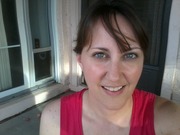Parents of teens and young college kids understand the mood and energy changes that this age group can experience. They may be enthusiastic, upbeat, and energetic one moment and sleepy, grouchy, and sad the next.
While social pressures, homework, studying, or hormones may be to blame, Seasonal affective disorder, or SAD, may also be the cause.
With SAD, a person experiences a depression that occurs during a certain time of year, usually winter, when less natural sunlight is present. In a less common form of the disorder, depression is experienced during the summer months.
According to National Institutes of Health (NIH), SAD is a depression that usually begins in the teen years, and like most forms of depression, strikes girls more frequently that boys.
According to the KidsHealth website, researchers believe that sunlight, or the lack of sunlight, and how that plays a role in the brain’s production of the hormones melatonin and serotonin, is the trigger for this depression.
Melatonin is linked to sleep and our bodies produce more of it when the winter days are darker and shorter, making us lethargic. Depression is associated with low levels of serotonin. Serotonin production dips when we are exposed to fewer hours of sunlight or natural light.
Low energy levels and sleepiness, especially during the late afternoon, are a common symptom. NIH also included increased appetite and weight gain, loss of interest in daily activities, irritability, and withdrawal from social activities in the list of symptoms for SAD.
Although there is no diagnostic test for this depression, your teen’s doctor will ask about a family history for SAD or depression and any seasonal cycles you have noticed with your teen’s symptoms.
Treatment for SAD varies. NIH reported that light therapy, from a light box that mimics natural sunlight, often improves symptoms in about a month, if it is going to work for the patient.
In other cases, a health care provider may prescribe antidepressants. Often times, symptoms go away, without treatment, as spring arrives.
NIH reported that it is helpful for your teen to get outdoors for walks and exercise and to stay active, socially. If your teen is diagnosed with SAD, he or she may benefit, in the future, from preventative treatments that begin in the fall or early winter, before symptoms start.
Sources:
MedLinePlus. Seasonal Affective Disorder. Web. 1, Feb. 2012.
http://www.nlm.nih.gov/medlineplus/ency/article/001532.htm
KidsHealth. Seasonal Affective Disorder. Web. 1, Feb. 2012.
http://kidshealth.org/parent/emotions/feelings/sad.html#
Reviewed February 2, 2012
by Michele Blacksberg RN
Edited by Jody Smith






Add a CommentComments
There are no comments yet. Be the first one and get the conversation started!